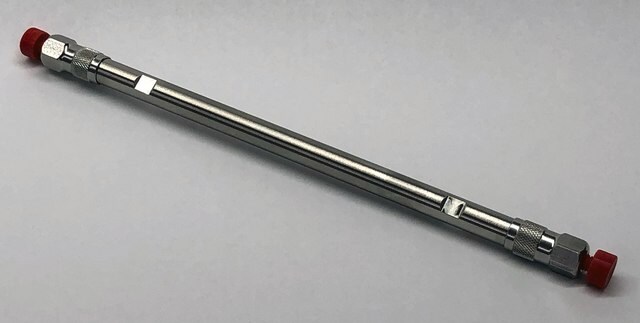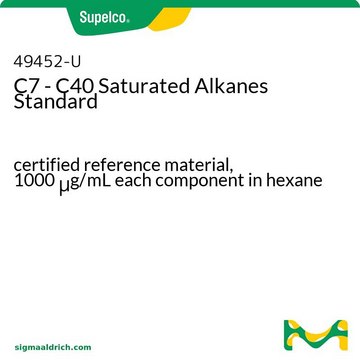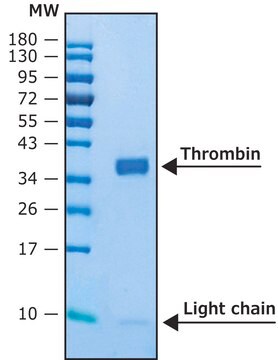추천 제품
일반 설명
Native toxin B purified from C. difficile strain VPI10463 (toxinotype 0)
생화학적/생리학적 작용
Clostridium difficile Toxin A and B, cation-dependent UDP-glucose glucosyltransferases, are cellular toxins that inactivate Rho (and Rho family small GTPases) through monoglucosylation of these family members. Effects of this monoglucosylation include disregulation of the actin cytoskeleton, cell rounding, cytotoxicity, and altered cellular signaling. Rho proteins are monoglucosylated by Toxin A and B using UDP-glucose as a cosubstrate. Rho, Rac and Cdc42 are included in the Rho subfamilies targeted by both toxins. Low molecular mass GTP-binding proteins that are not modified by Toxin A and B include Ras, Rab, Arf, or Ran subfamilies as well as heterotrimeric G proteins.
Inactivates Rho (and Rho family small GTPases). Causes disregulation of the actin cytoskeleton, cell rounding, cytotoxicity, and altered cellular signaling.
Clostridium difficile is a bacteria that causes antibiotic-associated pseudomembranous colitis. This bacterium produces two high molecular weight exotoxins, toxin A and B. Toxin B is more effective than toxin A in disrupting human colonic epithelium in vitro.
Clostridium difficile is a bacteria that causes antibiotic-associated pseudomembranous colitis. This bacterium produces two high molecular weight exotoxins, toxin A and B. Toxin B is more effective than toxin A in disrupting human colonic epithelium in vitro.
Toxin B is 100-1,000-fold more cytotoxic than toxin A in inducing rounding-up of cells and destruction of the actin cytoskeleton.
특징 및 장점
This compound is a featured product for Cyclic Nucleotide research. Click here to discover more featured Cyclic Nucleotide products. Learn more about bioactive small molecules for other areas of research at sigma.com/discover-bsm.
This compound is featured on the GTP Binding Proteins (Low Molecular Weight) page of the Handbook of Receptor Classification and Signal Transduction. To browse other handbook pages, click here.
재구성
Contents of the 50 μg SKU when reconstituted in 250 μL sterile distilled water will contain Toxin B at a concentration of approximately 0.2 mg/mL in 0.05 M Hepes, 0.15 M sodium chloride and 5% sucrose.
Contents of the 2 μg SKU when reconstituted in 100 μL sterile distilled water will contain Toxin B at a concentration of approximately 0.02 mg/mL in 0.05 M Hepes, 0.15 M sodium chloride and 5% sucrose.
Contents of the 2 μg SKU when reconstituted in 100 μL sterile distilled water will contain Toxin B at a concentration of approximately 0.02 mg/mL in 0.05 M Hepes, 0.15 M sodium chloride and 5% sucrose.
기타 정보
After reconstitution, the reconstituted liquid can be frozen at -80 °C to -20 °C to extend stability to 1 year; however every freeze/thaw cycle wil cause increased aggregation. Avoid multiple freeze/thaw cycles and multiple temperature fluctuations.
Mixing: Swirl or pipette gently to mix. Vortexing may promote aggregation.
Mixing: Swirl or pipette gently to mix. Vortexing may promote aggregation.
신호어
Danger
유해 및 위험 성명서
Hazard Classifications
Acute Tox. 3 Oral - Acute Tox. 4 Dermal - Acute Tox. 4 Inhalation
Storage Class Code
6.1A - Combustible acute toxic Cat. 1 and 2 / very toxic hazardous materials
WGK
WGK 2
시험 성적서(COA)
제품의 로트/배치 번호를 입력하여 시험 성적서(COA)을 검색하십시오. 로트 및 배치 번호는 제품 라벨에 있는 ‘로트’ 또는 ‘배치’라는 용어 뒤에서 찾을 수 있습니다.
Nucleotide sequence of Clostridium difficile toxin B gene.
Barroso L A, et al.
Nucleic Acids Research, 18(13), 4004-4004 (1990)
Clostridium difficile toxin B is more potent than toxin A in damaging human colonic epithelium in vitro.
Riegler M, et al.
The Journal of Clinical Investigation, 95(5), 2004-2011 (1995)
Glucosylation of Rho proteins by Clostridium difficile toxin B.
Just I, et al.
Nature, 375(6531), 500-500 (1995)
자사의 과학자팀은 생명 과학, 재료 과학, 화학 합성, 크로마토그래피, 분석 및 기타 많은 영역을 포함한 모든 과학 분야에 경험이 있습니다..
고객지원팀으로 연락바랍니다.








